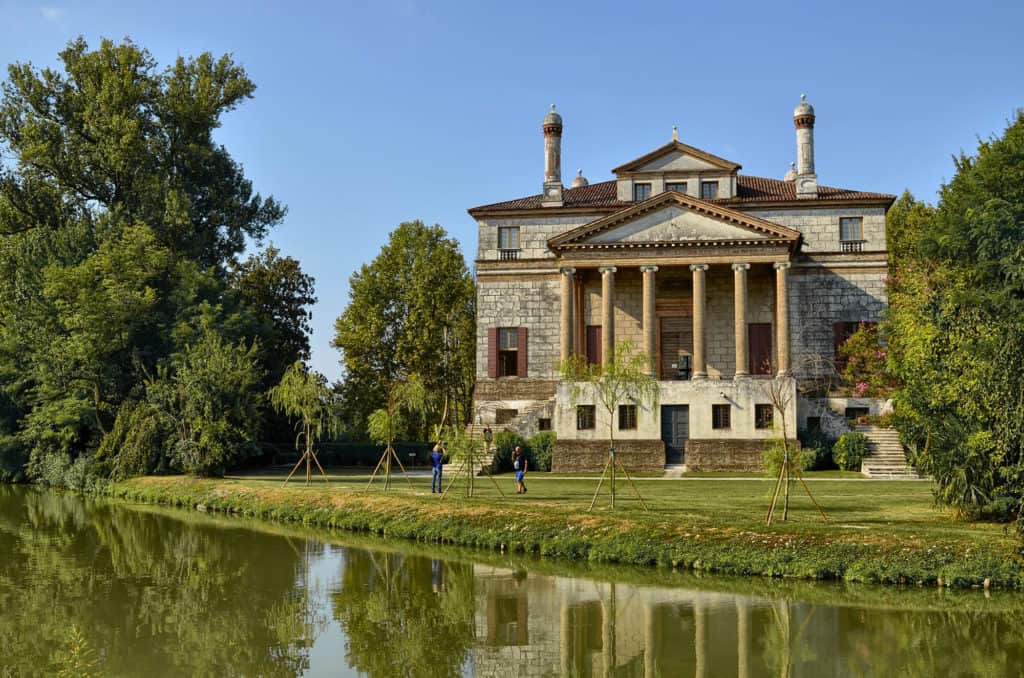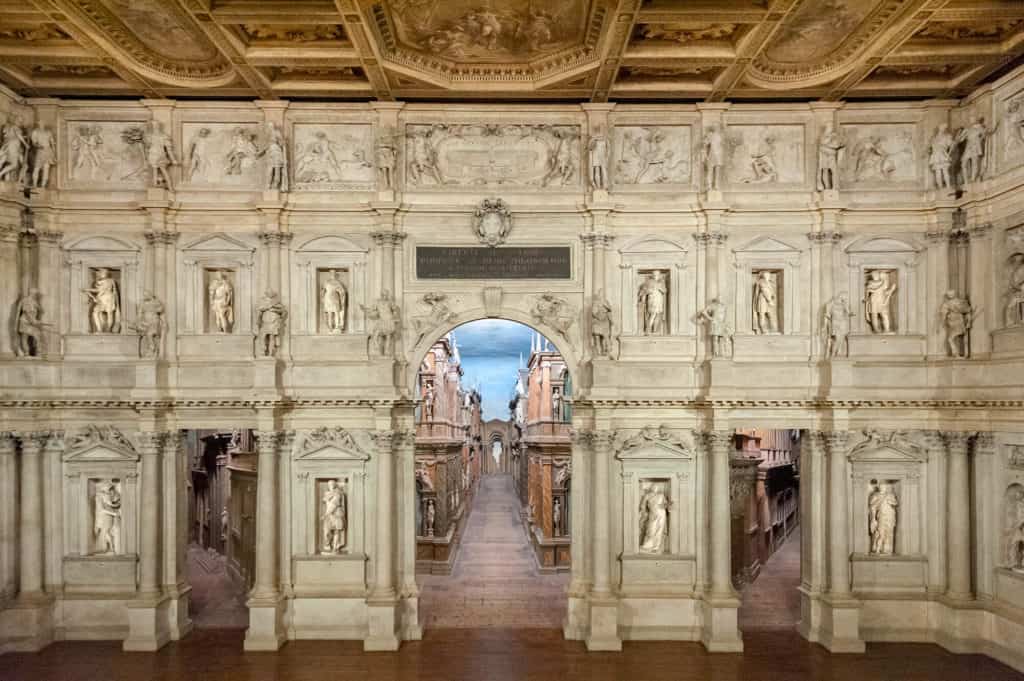Destination: Veneto
Symmetry, perspective, and classical temple design, the architecture of Andrea Palladio is unmistakable and scattered throughout the Veneto and the city of Vicenza are more than twenty-four Palladian villas (and UNESCO World Heritage sites) – testament to the revolutionary Renaissance architect and an incredible adventure in exploring the Veneto.
Beauty will result from the form and correspondence of the whole, with respect to the several parts, of the parts with regard to each other, and of these again to the whole; that the structure may appear an entire and compleat body, wherein each member agrees with the other, and all necessary to compose what you intend to form.
Andrea Palladio
Andrea Palladio
Palladio was Italy’s most sought after architect of 16th century. Impassioned by the academic studies of Roman architect Vitruvius (The Ten Books on Architecture) and the works Leon Battista Alberti, a lover of mathematical precision, Palladio designed and built living temples in the guides of country residences, city palaces, churches and even bridges, which paid homage to classical Greek and Roman architecture and humanist ideals through design, material and decoration.

An architectural pilgrimage
Vicenza is the cradle of Palladio and his architectural movement. The city’s urban fabric has undergone remarkably little change in the last 400 years, retaining many of its original buildings. The city offers a myriad of Palladian masterpieces including Basilica Palladiana, La Loggia del Capitaniato, Chiesa di San Vincenzo, Palazzo del Monte di Pieta, Basilica Palladiana in the amazing Piazza dei Signori, Teatro Olimpico (a theatre and Palladio’s final project), and Palazzo Chiericati, now the city’s main art gallery, and Palazzo Barbaran da Porto which hosts the Palladio Museum.
Just outside of the city, Villa Almerico Capra La Rotonda is the icon of neoclassical Palladian architecture and perhaps Palladio’s most important project. Built on a square plan, the villa faces the four cardinal points – north, south, east and west – with nearly identical four, each of which has a projecting portico. Its central hall is circular hall and capped with a dome, thus giving the nickname La Rotonda. A timeless masterpiece, La Rotonda remains, to this day, a private home. And up the road is 17th century Villa Valmarana ai Nani (Villa of the Dwarves) which boasts frescoes by Tiepolo.
In the nearby countryside, visitors can explore the magnificently austere Villa Emo in Fanzolo di Vedelago whose incredible horizontal facade is matched by its vertical path entrance. In Piombino Dese, the splendid Villa Cornaro is considered one of the most influential buildings in the world noted for its pillared double front porch.

The elegant Villa Foscari in Mira has perhaps the most intriguing story. Two brothers, from the influential Foscari family commissioned Palladio to build a gorgeous riverside villa which became known as La Malcontenta, as an unhappy Foscari bride lived her life under house here after being unable to fulfil marital obliglations.
Villa Pisani in Stra is considered the Queen of Venetian villas, a symbol of maximum splendour. An oversized palace on the Brenta river, Villa Pisani’s commanding broad façade of monumental columns and topped with statuary is gateway to a vast complex of courts, gardens, stables, and maze.
Travel Tip
The peripatetic traveler can explore Palladio’s villas (and similar) on their own and also via il Burchiello, a river cruise traveling from Padova to Venice (and vice versa). A typical Venetian wooden barge once used to transport Venice’s aristocracy to their countryside homes, the Burchiello explores the Brenta riviera as guides recount the history and culture behind the treasure trove of frescoed summer dwellings including Villa Widmann, Villa Pisano and Villa Foscari.
Palladio around the world
Thanks to his incredible visual legacy and his four-volume Quattro Libri dell’Architettura (1570), Palladio greatly influenced those in England, Europe and North America from Sir Christopher Wren to Thomas Jefferson to the ordinary American house builder, leading to the birth of his own architectural style known as Palladianism. On the 500th anniversary of his birth, December 6th 2010, United States Congress passed Resolution 259 which recognised Andrea Palladio as the Father of American architecture.
